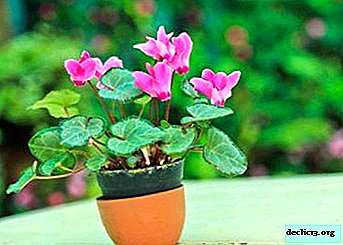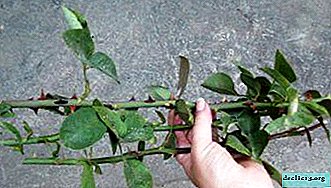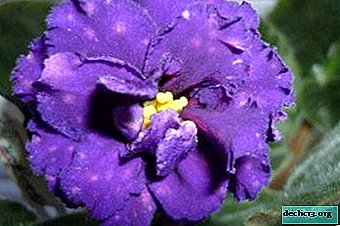What soil is suitable for cacti? How to make it yourself and how to choose the purchased soil?

For many years, cacti have been one of the most common visitors to our window sills.
These inhabitants of deserts and coasts are very unpretentious, which earned our universal love, but do not think that you can do it only by watering the plant.
The soil for cacti is hardly important less than watering, so you need to approach this with all seriousness. In the article you can read what kind of land cactus needs, whether it is suitable for succulents, whether it is possible to make a mixture of soil at home and how.
Why is land so important?
The soil should be not only nutritious and enriched with microelements, but also in composition should correspond to the soil in which a cactus of this species grows in nature.If you neglect the preparation of the soil or do it incorrectly, the cactus may become sick or be affected by pests, for example spider mites, cactus thyroid insects, root aphids, mealybugs and others, and as a result, these factors will lead to the death of the plant.
Composition - what kind of land do plants like?
Creating an acceptable soil for this plant is a very complex and painstaking task, requiring extensive knowledge about the selected cactus. Therefore, soils vary from species to species, but almost always consist of the following elements, taken in different proportions:
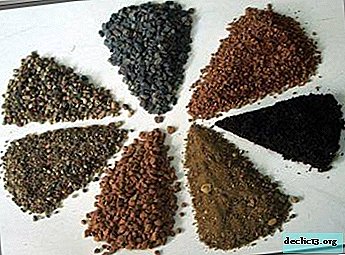 Sod or clay-sod land - This layer perfectly retains fluid, slowing down the process of leaching of nutrients.
Sod or clay-sod land - This layer perfectly retains fluid, slowing down the process of leaching of nutrients.- Old greenhouse - easier to obtain, but with worse qualities, an analogue of clay-turf or sheet land, location: any land taken from the garden.
- Sheet earth or leaf humus - land rich in nutrients and easily absorbing water. You can find it in early spring, under last year's fallen leaves.
- Humus - in small doses is added to the soil with a lack of nutrients. Large, mainly forest, cacti grow in this soil.
- Coarse river sand - an element that makes the soil loose and porous is necessary in the preparation of any soil for cactus. You can find it on the beaches and river banks. Before use, rinse with fine dust.
- Zeolite - It is called burnt clay. An element that increases the porosity of the soil, accelerating the absorption of liquids and drying of the soil. Zeolite granules are found in cat litter for the toilet. It is enough to buy a non-clumping filler, rinse and sift the granules, throwing out those that are less than 4-5 mm.
- Charcoal - Powdered charcoal is used as a disinfection. Pieces of charcoal can be added to the soil to prevent decay processes. To produce charcoal, a piece of deciduous wood is burned and broken into small pieces.
- Brick chips - an element that makes the soil more loose and porous, and also retains excess moisture.
- Peat - serves as a regulator of moisture in the soil.
The proportions of creating a substrate at home with your own hands
- Soil for desert species is as follows: In equal proportions mix soddy ground, leafy, peat and coarse sand.
- For lowland cacti: take turf soil, leaf humus, peat, humus and coarse sand in a ratio of 2/1/1/1/1, respectively.
- Large and fast-growing Cereus family cacti will require: identical amounts of turf and leaf land, peat and a quarter of their volume of peat.
- Universal option: If it is not possible to determine the affiliation of the cactus, then you can use the following recipe: take leaf humus, soddy ground, coarse sand, charcoal (crushed) and brick chips in a ratio of 2/2/2 / 0.5 / 0.5 and mix.
We offer you to watch a video on how to make soil for cacti with your own hands:
Is drainage necessary?
No less important is drainage. He will save the cactus from stagnation of water in the roots, which in the future could lead the plant to death. What does drainage consist of? It takes from the sixth to the third of the entire pot and is divided into 2 layers in structure:
- Upper. This drainage layer is made of gravel. It should separate the cactus from the ground, and not just be scattered across the surface.
In no case do not use expanded clay for the top layer. Expanded clay is a moisture-intensive material that quickly collects water and dries for a long time, which prevents the drying of the soil. Using expanded clay as the top layer will only harm the cactus.
- To the bottom. Expanded clay or crushed stone is suitable for this layer.
Drainage process
- Place a claydite or gravel layer on the bottom of the pot.
- Top the soil.
- Place a layer of gravel on the soil.
- Also, do not forget about the drainage holes in the pot.
Ready soil for cactus and succulents, its purchase
 If there is no time, desire or opportunity to tinker with the creation of soil, it can always be bought in the store, a lot of offers. But it is worth paying attention that most ready-made mixtures are made on the basis of peat, which can adversely affect the plant, so the soil is “brought to mind" by adding the necessary elements to them.
If there is no time, desire or opportunity to tinker with the creation of soil, it can always be bought in the store, a lot of offers. But it is worth paying attention that most ready-made mixtures are made on the basis of peat, which can adversely affect the plant, so the soil is “brought to mind" by adding the necessary elements to them.
When buying a mixture you need to study the composition. In what land do thorny plants be planted? The following soil will be most suitable:
- fertilized;
- based on lowland peat.
Succulents are very similar to cacti plants, but is the soil suitable for the former for the latter? Succulents have similar needs, and the soil for them differs little from the soil for cacti. Manufacturers of finished soil write "For cacti and succulents" and have the right to do so.
Speaking of soil "For cacti and succulents": in Moscow 2.5 liters of finished bio-soil will cost from 26 rubles, in St. Petersburg - from 27 rubles. Soil from the company "Peter Peat" 2 l will cost from 42 rubles for the capital and from 40 rubles for St. Petersburg. 6 liters of Agricola soil in Moscow will cost from 54 rubles, in St. Petersburg - from 44 rubles.
Soil care
Soil also requires maintenance.
- Sterilization. The very first thing that needs to be done for him is sterilization. 20-30 minutes is enough for all the soil to warm up to 100 C.
- Watering. Water the plant, depending on environmental conditions. At high temperatures, low humidity, and intense sunlight, the cactus requires more fluid. Therefore, in the summer, with the exception of cloudy days, cacti need to be watered daily, with the onset of autumn, reduce watering, and in winter, reduce watering to 2 times a month.
For irrigation should use rain or boiled water at room temperature.
- Top dressing. Most often, the cactus is "fed" with salts of nitrogen, potassium, phosphorus and calcium. Coal chips, gravel and other components are added to the soil itself in order to improve its quality.
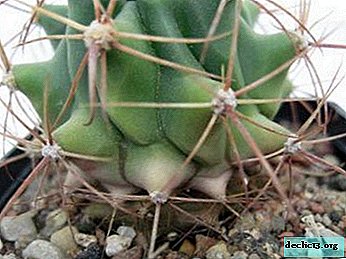 Pests. The main pest living in the soil is the mealy root worm. This is a light insect 1-2 mm long, capable of changing the place of stay, so one infected pot is a danger to everyone else if the pots are nearby. A cactus, severely affected by the worm, stops growing, discards the buds. There are two methods to combat the parasite:
Pests. The main pest living in the soil is the mealy root worm. This is a light insect 1-2 mm long, capable of changing the place of stay, so one infected pot is a danger to everyone else if the pots are nearby. A cactus, severely affected by the worm, stops growing, discards the buds. There are two methods to combat the parasite:- Chemical - cactus twice, with an interval of 14 days, is sprayed with a systemic insecticide.
- Mechanical - the cactus and its roots are washed with warm water, after which the cactus is dried and transplanted into clean soil.
For greater effect, you can combine both methods.
As it turned out, cactus is a lot of trouble. But if this does not push away the amateur gardener, then the prickly friend will be a great alternative to those who have bothered us with scarlet, agave and ficus.
Useful video
We offer you to watch a video about the soil in which you need to plant cacti:

 Sod or clay-sod land - This layer perfectly retains fluid, slowing down the process of leaching of nutrients.
Sod or clay-sod land - This layer perfectly retains fluid, slowing down the process of leaching of nutrients. Pests. The main pest living in the soil is the mealy root worm. This is a light insect 1-2 mm long, capable of changing the place of stay, so one infected pot is a danger to everyone else if the pots are nearby. A cactus, severely affected by the worm, stops growing, discards the buds. There are two methods to combat the parasite:
Pests. The main pest living in the soil is the mealy root worm. This is a light insect 1-2 mm long, capable of changing the place of stay, so one infected pot is a danger to everyone else if the pots are nearby. A cactus, severely affected by the worm, stops growing, discards the buds. There are two methods to combat the parasite:
